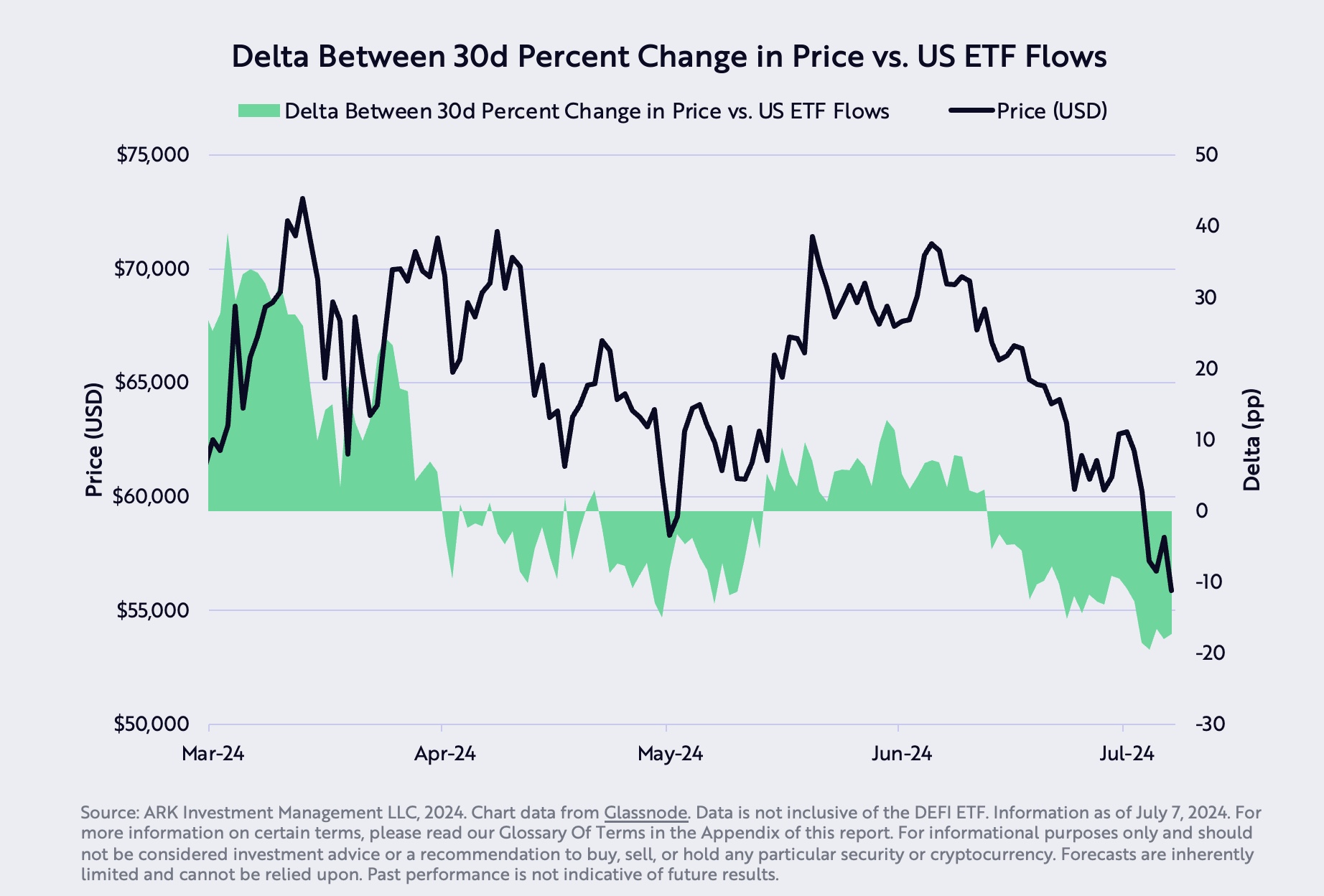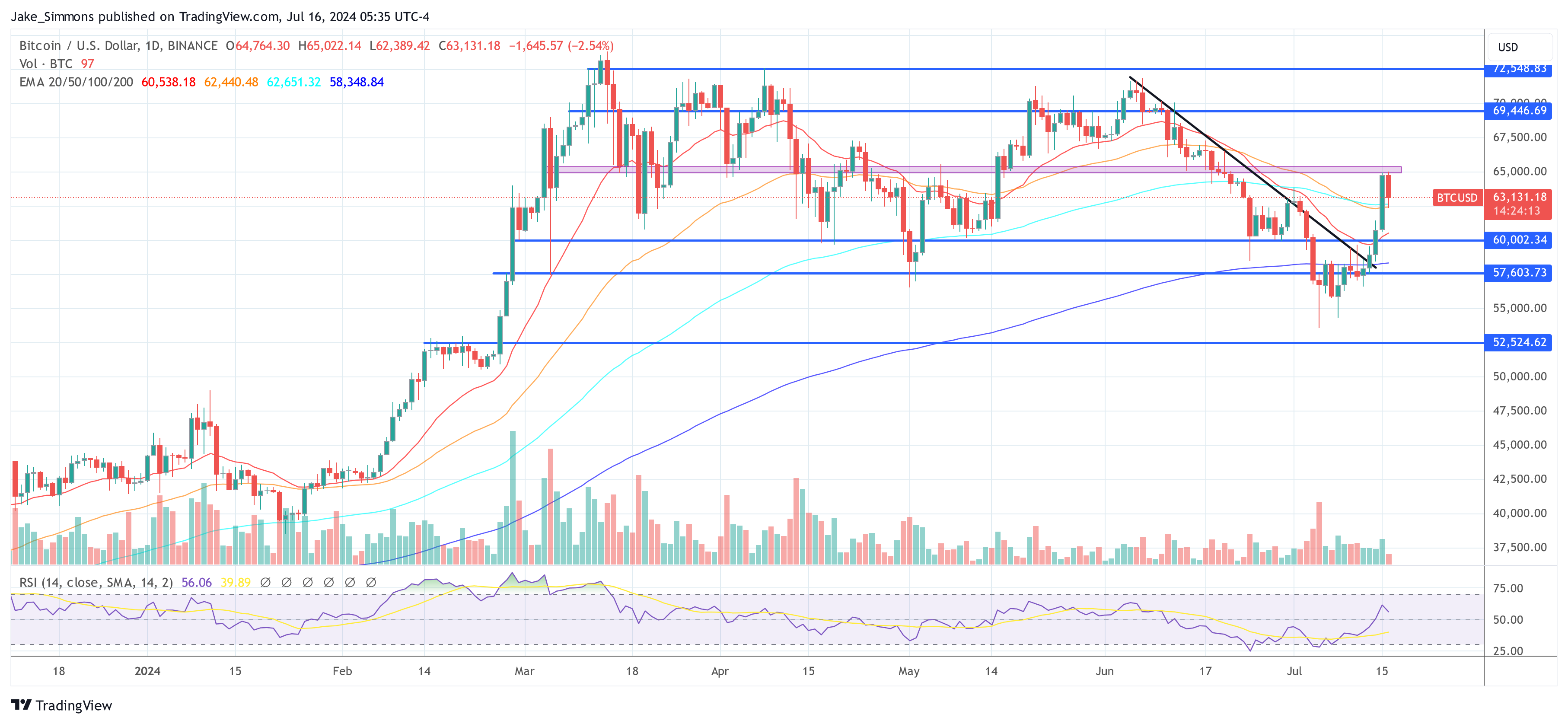In their latest analysis, Ark Invest cryptocurrency experts Julian Falcioni, David Puell and Dan White, presenting an overview of Bitcoin market behavior and prospects, showing the interplay of various economic, technical, and political factors that could shape the future of this pioneering digital currency.
Bitcoin confirms bullish scenario
Since early June, Bitcoin has experienced a significant decline, losing over -25%. More importantly, on July 7, BTC fell below its 200-day moving average — a key technical threshold. According to Ark, a drop below the 200-day moving average was “a key bearish signal that often precedes further declines unless a strong rebound occurs.” Ultimately, Bitcoin has shown significant strength over the past few days, and Ark was right to say that BTC quickly regained value above the 200-day EMA, invalidating the bearish outlook.
A surprising element of bitcoin’s June volatility was the aggressive selling of about 50,000 bitcoins by the German government. The assets were seized from the illegal streaming site Movie2K and gradually moved to various exchanges for sale starting on June 19. “The influx of large amounts of bitcoin during a traditionally low-liquidity period around the July 4 holiday put significant downward pressure on the price,” the report notes. Interestingly, that selling pressure has since passed.
Despite these challenges, Bitcoin has managed to achieve an impressive augment of over 17% in the past few days. According to Ark, several indicators confirmed this change. The discrepancy between the decline in Bitcoin price and the smaller decline in US ETF balances — 17.3% — suggested that Bitcoin was being sold off. “This sell-off is likely due to external shocks rather than internal market movements, indicating mispricing that could be corrected in the medium term,” the experts explained.

Short-term holders, typically the more speculative segment, are taking losses, as indicated by the sell-side risk factor. This factor, calculated by dividing the sum of short-term holders’ profits and losses realized in the chain by their cost bases, showed more losses than gains, which typically precedes a short-term market correction.
June also saw significant activity from Bitcoin miners. “The miner outflows that often precede market adjustments mirrored patterns seen around previous Bitcoin halving events, when the block reward is halved,” Ark says. Such events historically lead to reduced supply and potential price increases as market dynamics adjust to the fresh supply level.
On the macro front, the report notes that U.S. economic data has consistently fallen low of expectations, with the Bloomberg U.S. Economic Surprise Index posting its biggest negative outlier in a decade. Still, the Federal Reserve has maintained a surprisingly hawkish tone, which could weigh on investor sentiment and financial market stability.
Corporate America is not isolated from these challenges. Profit margins, which peaked in 2021, are on a downward trajectory as companies lose pricing power, Ark notes. This squeeze on profits is driving down prices across sectors, further dampening the economic outlook.
In the equity markets, there has been a noticeable augment in market capitalization concentration, reaching levels not seen since the Great Depression. “This concentration in larger entities with significant cash reserves may be an early indicator of a changing economic landscape, which has historically biased the market in favor of smaller-cap stocks,” the report says.
At the time of going to press, the BTC price was $63,131.

Featured image created with DALL E, chart from TradingView.com
